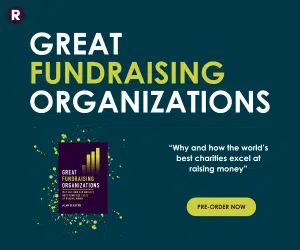Tearing up the charity narrative
Popular Ghanaian rapper Fuse ODG recently wrote an impassioned response to the third/fourth/fifth Band Aid single released at Christmas (I forget which iteration we’re on now), as upon receiving a transcript of the lyrics his fears of the Africa they paint were compounded: “a resource rich continent with unbridled potential… [portrayed] as diseased, infested and poverty stricken”.
It’s an all too common depiction, and having recently read an anonymously written article on The Guardian’s Voluntary Sector Network (We must hook donors in but I feel downright sick at the pictures charities paint). I cannot help but question the integrity of the narratives we’re being sold, as I’m sure many in the industry can relate to.
“We select the story of someone who has turned her life around in six months rather than the person who has gone from permanently using drugs to just getting high at weekends – and that in itself has taken two years – despite helping both examples.”
Anon, Guardian
I challenge this notion. Compassion fatigue is in part a response to an overwhelming series of images and for our charity content writer to feel coerced into proffering this type of story just to hit this year’s income targets, is truly mortifying.
I recently had an inspirational meeting with the founder of YCare, a charity focused on giving young people across the world a meaningful second chance in life. He told a story about a man, who after having spent months with one of YCare’s social workers, had managed to cut down his drinking to 15 cans a day from 20, simply by holding an empty jar in his hand as opposed to a can.
What I take from that tale is sustainable progress. A level of understanding and empathy that a social worker cultivated with that man over gruelling months of progress. Its not an overnight revelation necessarily, but you can’t erode the fact that it’s life-changing.
Why isn’t that good enough? These are the stories with longevity, they invite a deeper empathy because its something far more tangible, and it invites you to understand much more about the complexities surrounding the issue.
It shouldn’t be this way. Yes, charities are in functional regard a real business managing a challenging P&L. But I suggest that the very art of publishing heart-in-mouth, achingly manipulated smash and grab headlines and handpicking only the most agonising imagery has hastened our journey to desensitisation.
We are denied a tangible conclusion, a centering of context, an understanding and understandable narrative. Shock and awe is stressful. It induces a mini parasympathetic fight or flight response, which I would suggest causes just as many to fly as they do to fight.
Gideon Burrows says, as a charity content writer, you have “eight seconds” to grab someone’s attention. Consequently, headlines such as “a soldier shot my father, then tortured my mother and married me”, “Brian was diagnosed witha fatal disease… he recently went out and bought a gun” and videos like this:
[youtube height=”450″ width=”800″]https://www.youtube.com/watch?v=sYimJKg9QiE[/youtube]
certainly tick the boxes for shock and awe factors, and undoubtedly open a fair few wallets, but is this sustainable?
Think of the stories of your childhood. Literary theory traditionally supports beginning, middle, end linear narratives, first documented by Aristotle within the Unity of Action. Authors have of course manipulated and experimented with sequentially ordering these parts, but each is needed. We should not be denied this within the most important stories of all; compelling does not need to mean contrived.
Advertisement
“Keeping people and maintaining donations requires a deeper relationship and a deeper understanding. But that so often conflicts with inyear targets set by leaders, managers and trustees.”
(Anon, Guardian)
“Though shock tactics and negative images may raise money in the short term, the long-term damage will take far longer to heal”
(Fuse ODG, ‘Why I had to Turn Down Band Aid’)
Short-term pain but long term gain need to cease to be at loggerheads in the third sector. This needs to be the safe place for stories, those real narratives, and it is the grit and empathetic capacity of these truthful narratives that I fervently believe are the ones worth telling. We’re not selling oneliners in Hollywood to secure a movie deal. We’re in this for lives we change, the baby steps of emotional progress, we’re the hand-holders not the one-nighters. Charity is for the long haul. We need to move as a collective towards a different discourse.
So give me the truth. The WHOLE truth, and nothing but the truth. Be it short and snappy or lengthy; I certainly have time for your tales, even if your line manager doesn’t.
Emily Scott is Head of Marketing & Communications at online giving platform Givey. After 4 years of running brands for Unilever whilst undertaking more than 10 fundraising challenges, Emily finally decided to merge the passions of brand, consumer behaviour and charity and take the plunge to combine her expertise and become the head of Marketing and Communications at Givey, in an effort to help make giving commonplace.
Dave Erasmus asked her to help scale the innovative social giving platform he has spent three years designing, and Emily now focuses her attention on calling the third sector to higher levels of transparency, creative thinking and data management and sharing examples she sees from her work with charities, fundraisers and givers from within the Givey Community.
Photo: torn paper by Kzww on Shutterstock.com




